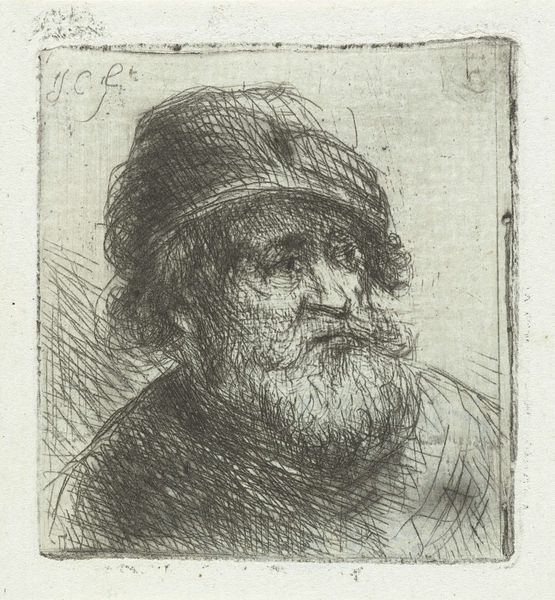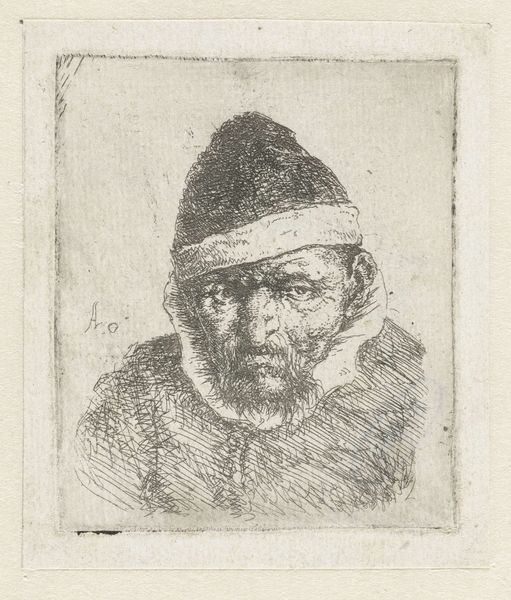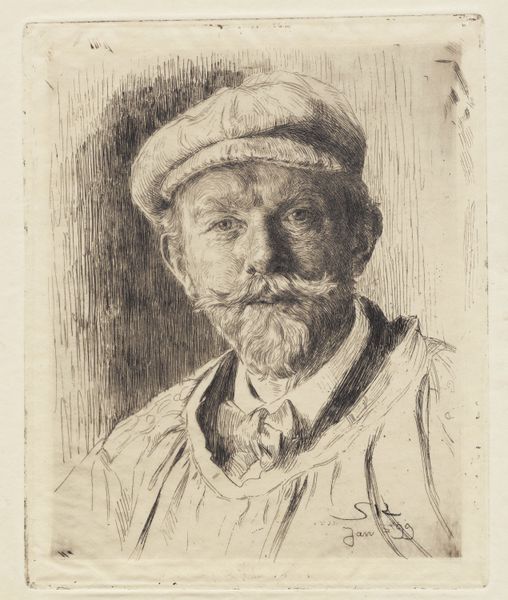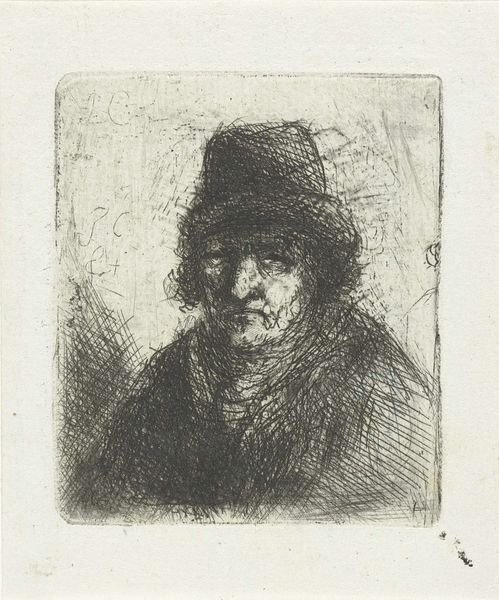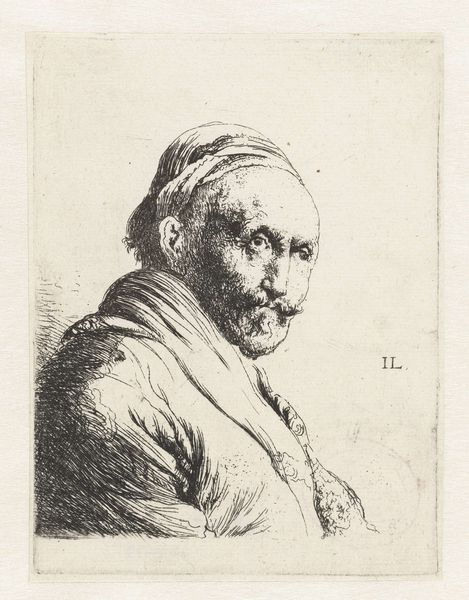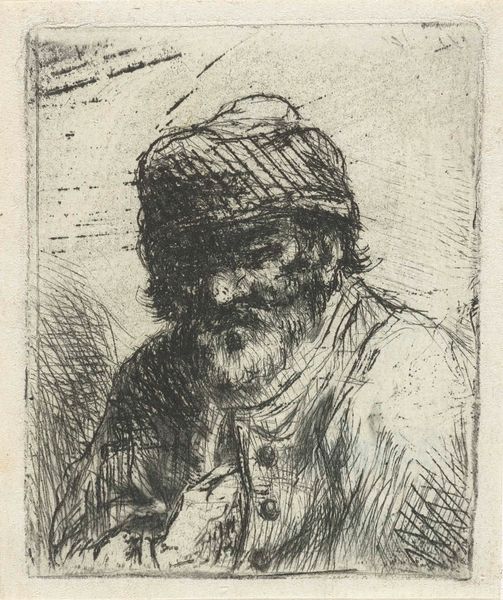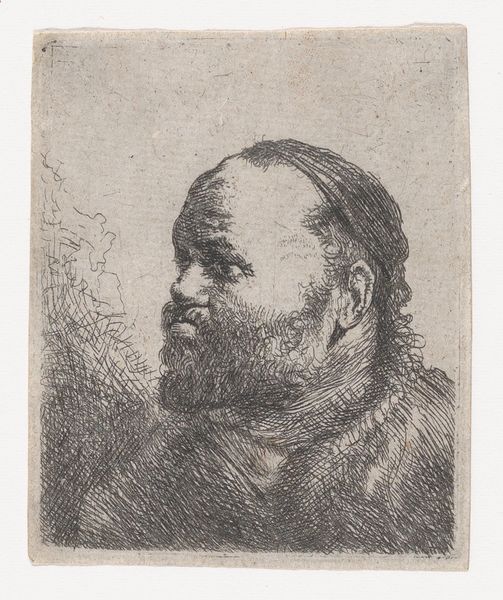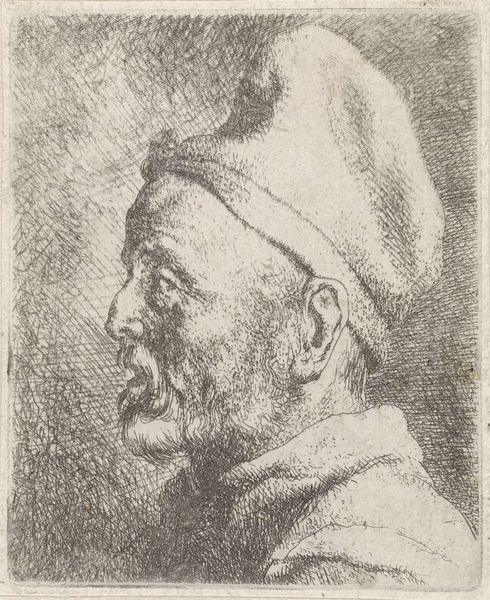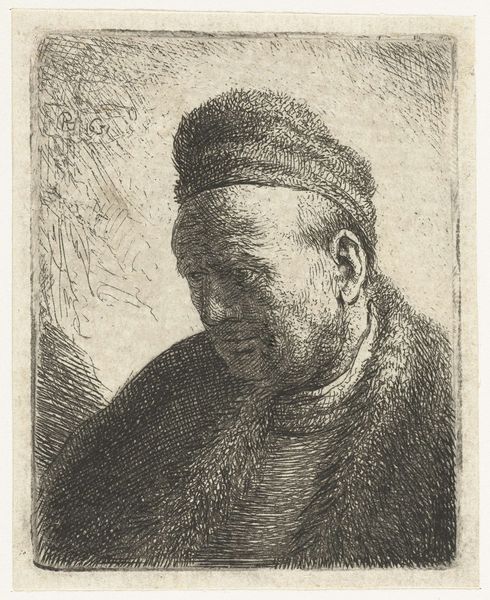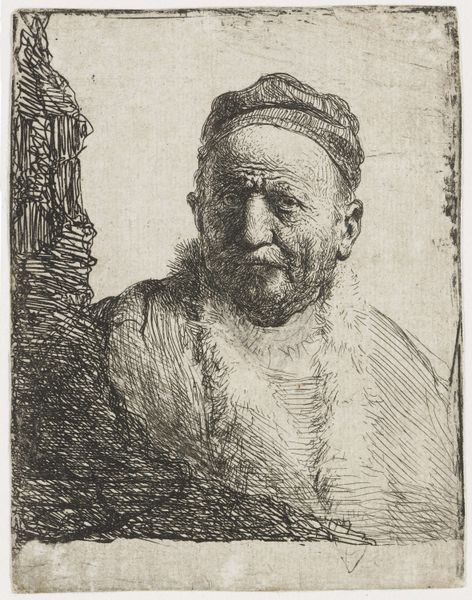
drawing, print, etching, ink
#
portrait
#
drawing
#
baroque
# print
#
etching
#
charcoal drawing
#
ink
#
pencil drawing
#
portrait drawing
Dimensions: height 77 mm, width 61 mm
Copyright: Rijks Museum: Open Domain
Jan Lievens created this etching of a cook with a cap in the 17th century. It’s made through the process of etching, where lines are bitten into a metal plate with acid, then inked and printed onto paper. Notice how Lievens uses a dense network of lines to create a sense of depth and shadow. Look at the cook's face, the textures of his cap, and the dark background, all rendered through the skilled manipulation of etched lines. The process allows for detailed and expressive mark-making, capturing the character of the subject with an immediacy that feels very modern, even now. Beyond its aesthetic qualities, the print also speaks to the burgeoning culture of food and labor in the Dutch Golden Age. The detailed representation of the working class reflects a broader interest in everyday life and the trades that sustained society. This approach elevated the status of ordinary people. Lievens' work blurs the lines between portraiture and genre scene. It reminds us that art is deeply intertwined with the social and economic realities of its time.
Comments
No comments
Be the first to comment and join the conversation on the ultimate creative platform.

